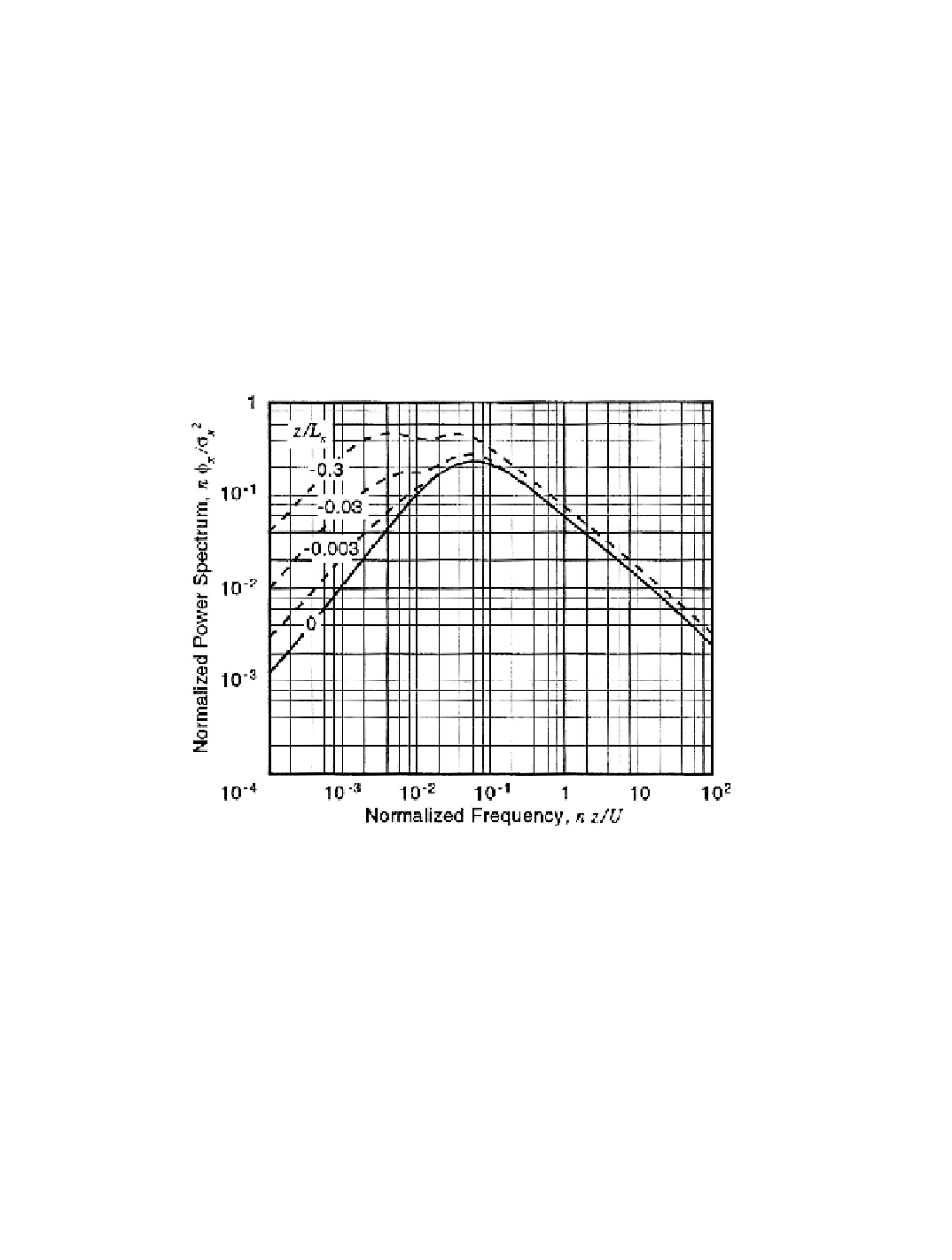Environmental Engineering Reference
In-Depth Information
fore call for structural response studies with turbulence representative of a range of stability
conditions. Panofsky and Dutton [1984] provide details of the physical principles and/or
experimental results on turbulence spectra for stable and unstable atmospheric conditions.
Frost
et al.
[1978] recommend that Equation 8-16 be used to mathematically describe the
spectra for a stable atmosphere with h
a
expressed as a function of
Richardson's number
as well as elevation.
Mathematical models of the influence of atmospheric stability on turbulence are still
being developed. It has been observed that spectra of horizontal turbulence in unstable air
consist of a lower-frequency portion that depends on the stability length,
L
s
, and a higher-
frequency portion that depends of the elevation [Hojstrup 1982]. Figure 8-19 illustrates the
lower-frequency effect on the longitudinal spectrum for unstable conditions (
L
s
<
0),
compared with the spectrum for neutral stability (Eq. (8-16a)). The peaks observed at h
»
0.004 are associated with coherent, large-scale eddy structure in unstable stratified
atmospheric boundary layers [Wilczak 1984, Antonia
et al.
1982 and 1983, Khalsa 1980,
Van Atta 1977]. This topic continues to be a major area of meteorological research.
Figure 8-19. Effect of unstable atmospheric conditions on the spectrum of longitudinal
turbulence.
[based on Hojstrup 1982].
Large-scale eddies are observed as distinctive ramp-like signals in temperature records.
As an example, a particular ramp with a horizontal length slightly greater than 500 m was
observed at the 50 m level of the
Boulder Atmospheric Observatory
tower in Colorado, at
a wind speed of 11 m/s and a stability length of -70 m [Wilczak 1984]. Characteristic
velocity fields are associated with these temperature ramps, and these may be of interest to
the wind turbine engineer. The interior ramp region generally has an upward vertical
velocity, while the surrounding quiescent region has downward vertical velocity. The
longitudinal velocity component attains its minimum value in the ramp interior and its
maximum value immediately behind the ramp's trailing edge. These velocity fluctuations
are generally embedded in the along-wind speed/time records.

Search WWH ::

Custom Search